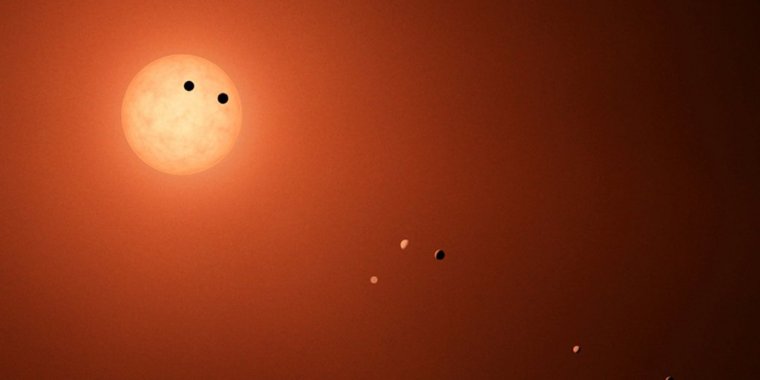| News / Space News |
NASA's Kepler Provides Another Peek at Ultra-cool Neighbor
On Feb. 22, astronomers announced that the ultra-cool dwarf star, TRAPPIST-1, hosts a total of seven Earth-size planets that are likely rocky, a discovery made by NASA's Spitzer Space Telescope in combination with ground-based telescopes. NASA's planet-hunting Kepler space telescope also has been observing this star since December 2016. Today these additional data about TRAPPIST-1 from Kepler are available to the scientific community.

This illustration shows the seven TRAPPIST-1 planets as they might look as viewed from Earth using a fictional, incredibly powerful telescope. ![]()
During the period of Dec. 15, 2016 to March 4, the Kepler spacecraft, operating as the K2 mission, collected data on the star's minuscule changes in brightness due to transiting planets.
These additional observations are expected to allow astronomers to refine the previous measurements of six planets, pin down the orbital period and mass of the seventh and farthest planet, TRAPPIST-1h, and learn more about the magnetic activity of the host star.
The release of the raw, uncalibrated data collected will aid astronomers in preparing proposals due this month to use telescopes on Earth next winter to further investigate TRAPPIST-1. (NASA)
YOU MAY ALSO LIKE

